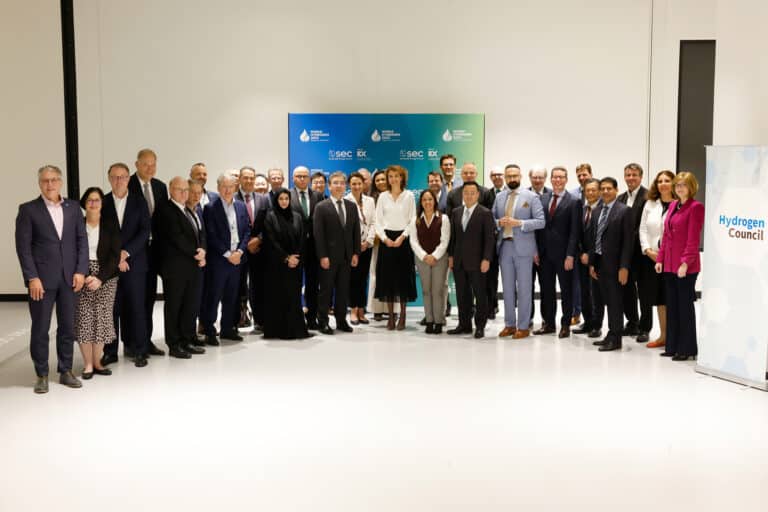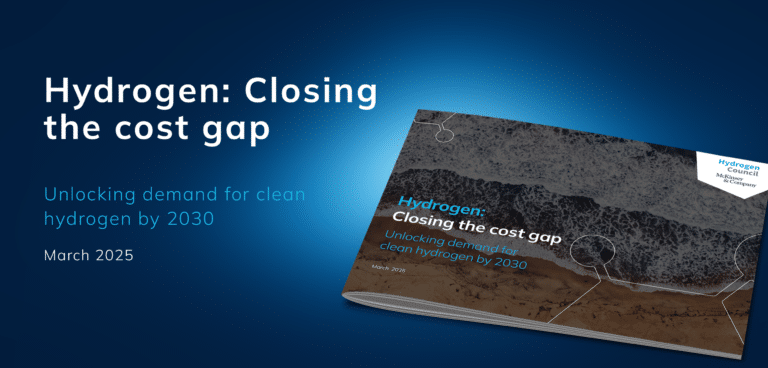This interview by David Fogarty, Climate Change Editor, was first published in The Straits Times.
Across the globe, there are ambitious plans to ramp up production of hydrogen fuel, which is increasingly regarded as a key part of the global clean energy economy that will power nations while cutting polluting greenhouse gas emissions.
The global Hydrogen Council says it is tracking 680 projects valued at an estimated US$240 billion (S$330 billion), a dramatic increase from projects worth about US$160 billion six months ago.
Large projects have been announced in Australia, the Middle East, Chile, Europe and elsewhere, many focused on using vast amounts of solar and wind energy to split water into oxygen and hydrogen.
The majority, though, are still at the planning stage and 88 per cent have yet to reach final investment decision, said council CEO Daryl Wilson.
“That’s a big concern,” he told the Ecosperity conference in Singapore during a panel discussion on Tuesday (June 7).
“We need to have an overall sense of urgency about getting the job done on account of climate change.”
There was a need for security of demand, he said. “Without customers, there’s no business and notwithstanding all kinds of supply, there needs to be demand and offtake for these projects.”
Another issue was building a global hydrogen supply chain to ship hydrogen products around the globe, which require policies to build the infrastructure of ships, pipelines and storage.
The council represents more than 130 firms around the world involved in developing the hydrogen industry, which involves not only the production of flammable hydrogen gas but also liquid hydrogen, ammonia as well as flammable methanol and green steel.
Hydrogen can be produced by a variety of means but the two main ones are green hydrogen — splitting water into hydrogen and oxygen using renewable energy — and blue hydrogen, which uses methane, or natural gas, as the feed stock, with the resulting CO2 captured and stored.
Energy-dense hydrogen is much cleaner than fossil fuels, releasing heat and water when burned and is viewed as a key source of transportable energy storage for the renewable energy industry.
“Part of the hydrogen story is about energy storage. So the intermittency of renewable energy from various sources in South-east Asia and Singapore can be mitigated and supported by hydrogen,” Mr Wilson told The Straits Times, adding that Asia is poised to be a major hydrogen importer for use in transport, power generation, industry and heating buildings.
Singapore, which is already investing in hydrogen projects, is also looking at becoming a regional bunking hub. For example, green ammonia, which can be produced in large volumes from green hydrogen from huge solar and wind farms, can be burned in power stations and ship engines.
Jera, Japan’s biggest electricity generator, is trialling the co-firing of ammonia in one of its coal power plants to try to cut carbon emissions.
“So there’s a hydrogen story, wherever you are in the world, and Singapore is very much front and centre and active in the hydrogen story today,” Mr Wilson said.
But he said investors and governments need closer coordination to ensure there were the right policies on building supply chain infrastructure and ensuring long-term demand.
“That’s where we still have some challenges because of the uncertainty in demand signals, especially from the policy side.”
“Kudos to China and South Korea, which are getting the most done most quickly,” he added, referring to policies and funding that are helping bring projects to market. These are mainly centred around fuel cell-powered passenger vehicles, he said.
“The bad news is we have a huge amount of projects in Europe, where we’re not getting stuff across the line as fast as we should,” he said, pointing to long delays in approval processes.
Big projects, though, are moving ahead.
In January this year, Singapore’s sovereign wealth fund GIC announced a strategic investment in green fuels firm InterContinental Energy (ICE), which has plans to develop huge green hydrogen hubs in Western Australia, Oman and Saudi Arabia totalling 200 gigawatts (GW).
Ms Alicia Eastman, president of ICE, told the panel discussion on Tuesday the firm chooses coastal desert locations to ensure maximum sunshine and wind to power its future hydrogen and green ammonia production, meaning cheaper costs.
All the projects under development are 25GW capacity or more, with the proposed Western Energy Hub in Western Australia to have a final capacity 50GW and about 20 million tonnes annual production of green ammonia, much of it for export.
“One of the benefits green hydrogen has for the long term is that the projects can predict what the price will be for the whole 20 to 25 year offtake agreement,” Ms Eastman told the conference, referring to energy securing concerns about volatile fossil fuel prices.
Mr Wilson said the war in Ukraine will “drive more investment in new choices of low-carbon hydrogen and renewable hydrogen”.
He added the council forecasts hydrogen will provide 22 per cent of the global energy use by 2050 and cover many applications, from steelmaking and ammonia fertiliser, to fuel for vehicles and decarbonisation of industry, such as using hydrogen as an energy raw material for making steel instead of coking coal.



